

for a living planet ®

Copyright 2009,WWF -India
The information in this document may be used only with due acknowledgment.
Published by
WWF -India Khangchendzonga Landscape Programme
Suggested citation
WWF -India.2009.Activity Report.Khangchendzonga Landscape Programme, Gangtok, Sikkim
Text
Ms.Priyadarshinee Shrestha and Dr.Dipankar Ghose
Design and layout
Ms.Priyadarshinee Shrestha
Photographs
Dr. Dipankar Ghose, Dr. Partha Sarathi Ghose, Mr. Rajarshi Chakraborty, Ms. Lak Tsheden Theengh, Mr. Basant Sharma, Mr Sanjib Pradhan, Mr. Deependra Sunar, Mr. Pemba Bhutia, Mr. Dwaipayan Banerjee, Mr.Pranav Chanchani, Mr.Sangay Sherpa and Ms.Priyadarshinee Shrestha
Printed by
Systematic Designers & Printers Pvt.Ltd. Siliguri
The material and the geographical designations in this report do not imply the expression on any opinion whatsoever on the part of WWF concerning the legal status of any country, territory or area or concerning the delimitation of its frontiers or boundaries.

for a living planet ®


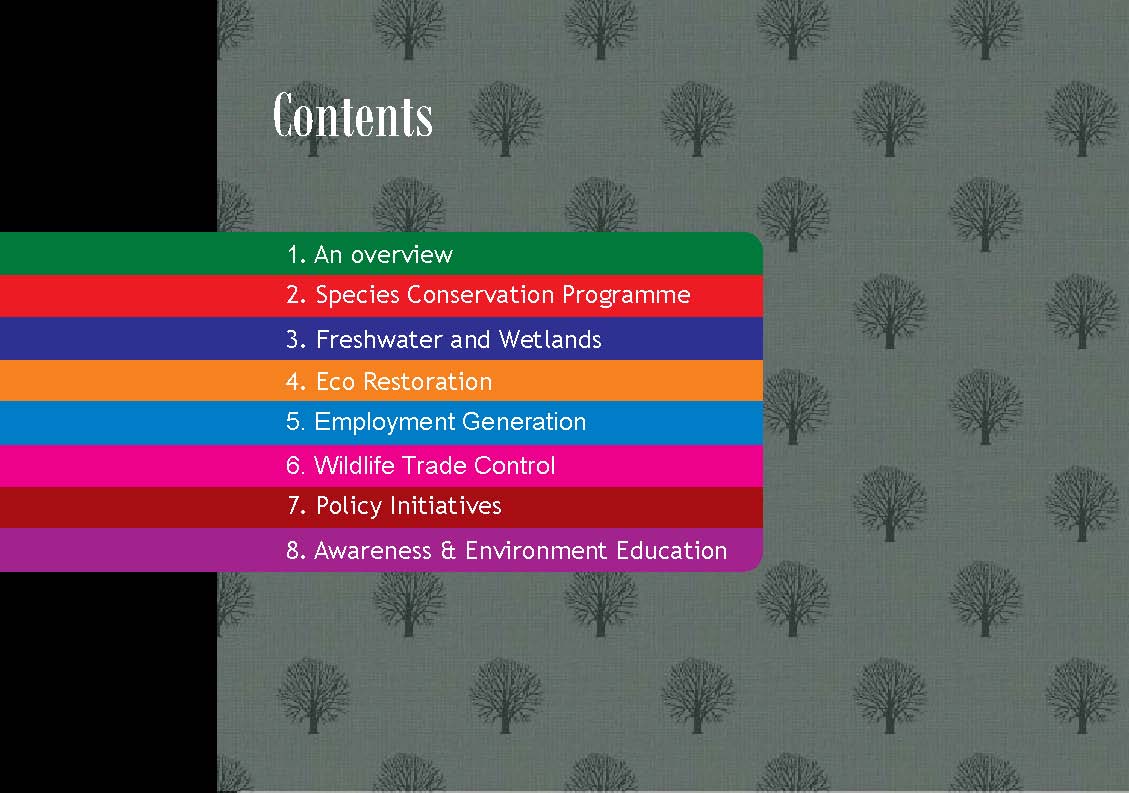

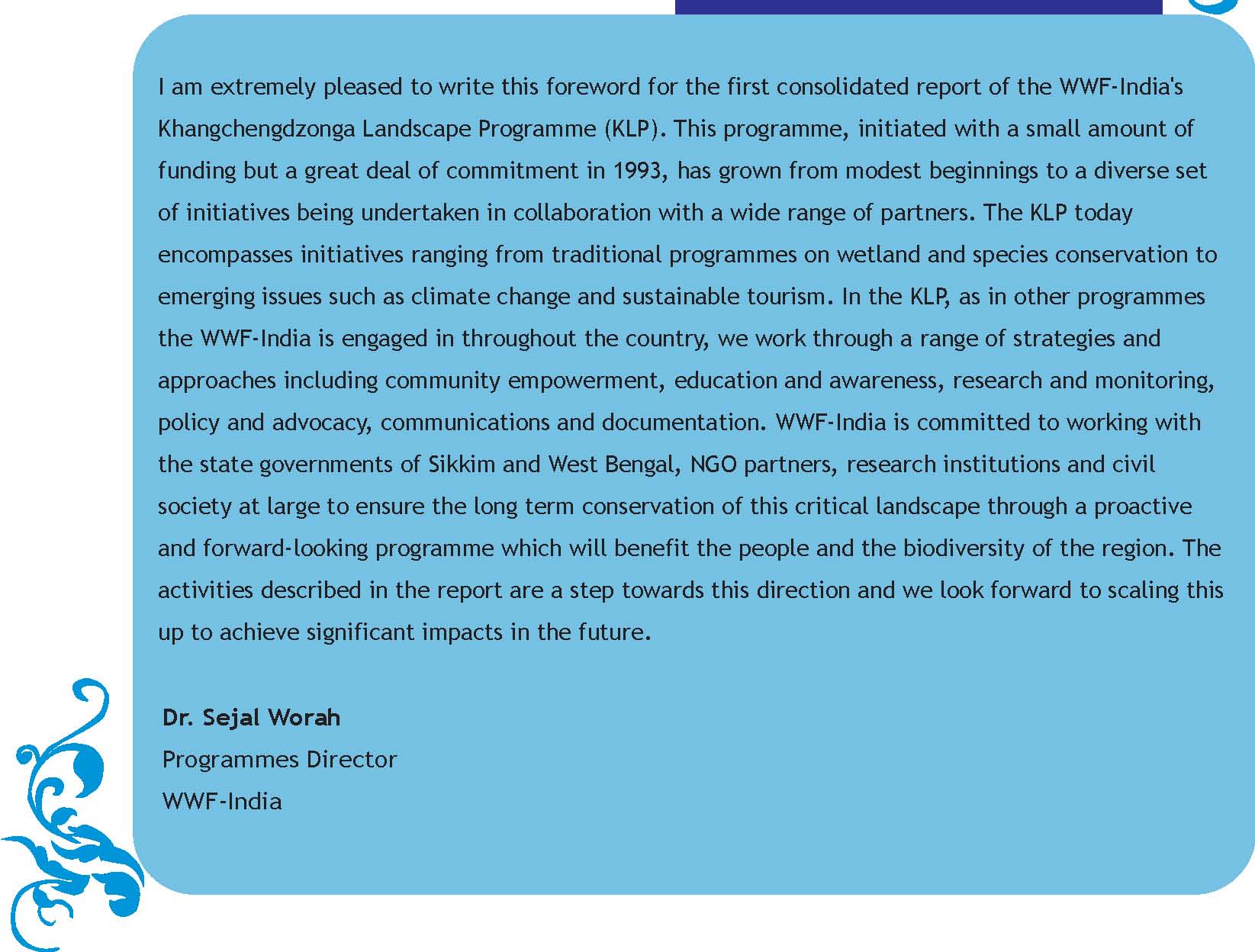
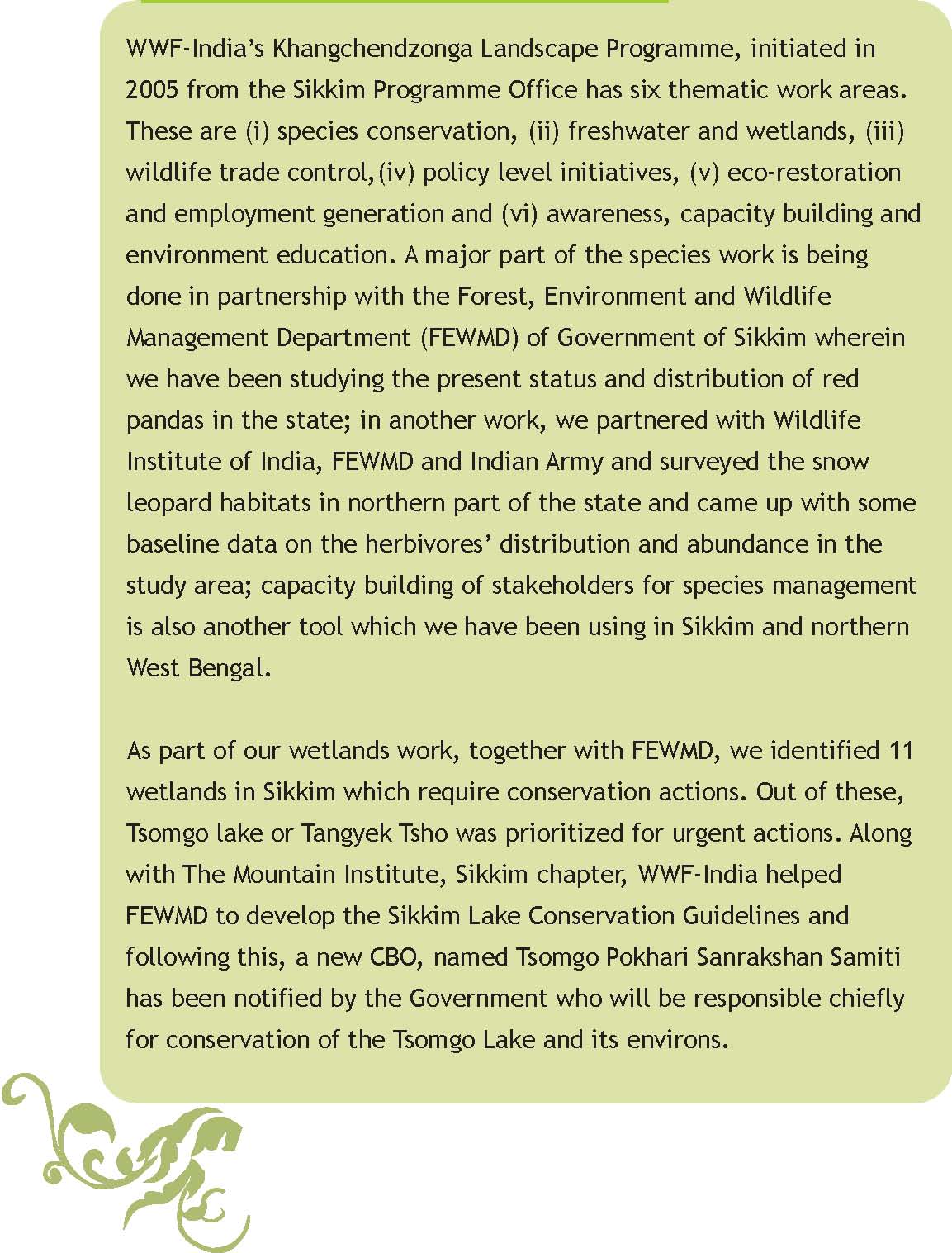
Eco-restoration has been a key activity of WWF-India which has been  of this initiative, WWF-India assists the farmers to grow saplings of indigenous plants and then those are planted in tea-gardens and degraded areas. This work not only helps in afforestation, but also helps in employment generation for the farmers. As part of livelihood improvement, we have been helping communities with apiculture, vermi-composting, off-seasonal vegetable cultivation, etc. Wildlife trade control is being done mainly through capacity building of stakeholders on technical and legal matters. The first step to control wildlife trade is to strengthen enforcement and recognizing this fact, WWF has been working with the state forest departments and different enforcement agencies.
of this initiative, WWF-India assists the farmers to grow saplings of indigenous plants and then those are planted in tea-gardens and degraded areas. This work not only helps in afforestation, but also helps in employment generation for the farmers. As part of livelihood improvement, we have been helping communities with apiculture, vermi-composting, off-seasonal vegetable cultivation, etc. Wildlife trade control is being done mainly through capacity building of stakeholders on technical and legal matters. The first step to control wildlife trade is to strengthen enforcement and recognizing this fact, WWF has been working with the state forest departments and different enforcement agencies.
WWF-India is working with the communities to address man-animal conflict both on ground and at a policy level also. The organization is presently also engaged in a dialogue with the stakeholders for conservation of sacred groves and protection of environment-friendly cultures and traditions of the local people.
As part of awareness and environment education, WWF-India has been working with the teachers from different parts of Sikkim in order to make the students aware about the biodiversity values of Sikkim. WWF-India appreciates the numerous partnerships, national and international without which implementing different projects of Khangchendzonga Landscape would have been impossible.
Dr. Dipankar Ghose
Head Eastern Himalaya & TAL WWF-India
Formed in 1962 (in India since 1969), WWF has grown into one of the world’s largest and most respected conservation organisation with nature conservation as its prime concern. In Sikkim, present since the last 13 years, the organisation established initially in the form of a field office and then changed into a state office and finally went through a transformation with the setting up of a programme office and underwent a shift to focus along with the Darjeeling field office, on the Khangchendzonga Landscape as a whole.
The Khangchendzonga Landscape spreading over an area of 11,500 sq.km has been declared a priority landscape by WWF and ICIMOD (2001). With a total of eleven Protected Areas shared by Sikkim and West Bengal, this landscape is home to many important species like the red panda, snow leopard, clouded leopard, rhododendrons etc.
The programme has projects on the following themes-Species conservation
Freshwater and wetlands
Wildlife trade control
Policy level initiatives
Eco restoration and employment generation
Awareness, capacity building and environment education
For implementation of these projects the programme collaborates with partners at different levels chief of which is the Forest Department, with whom most of the projects are jointly carried out. Collaborations are also underway with other Government agencies like Police Department,Indian Army, Science and Technology Department, Customs Department and NGOs like Khangchendzonga Conservation Committee (KCC), The Mountain Institute, SKES, Kabi Endeavors and other NGOs in the region and private agencies like the tea gardens.
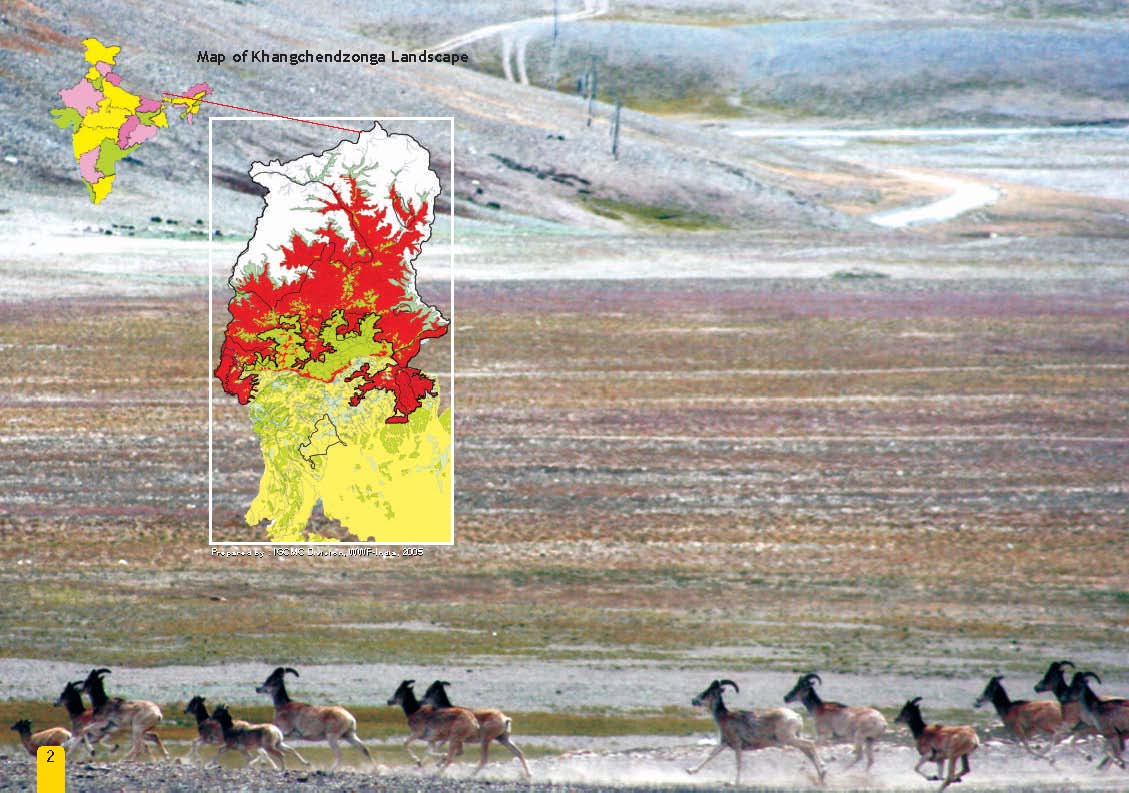
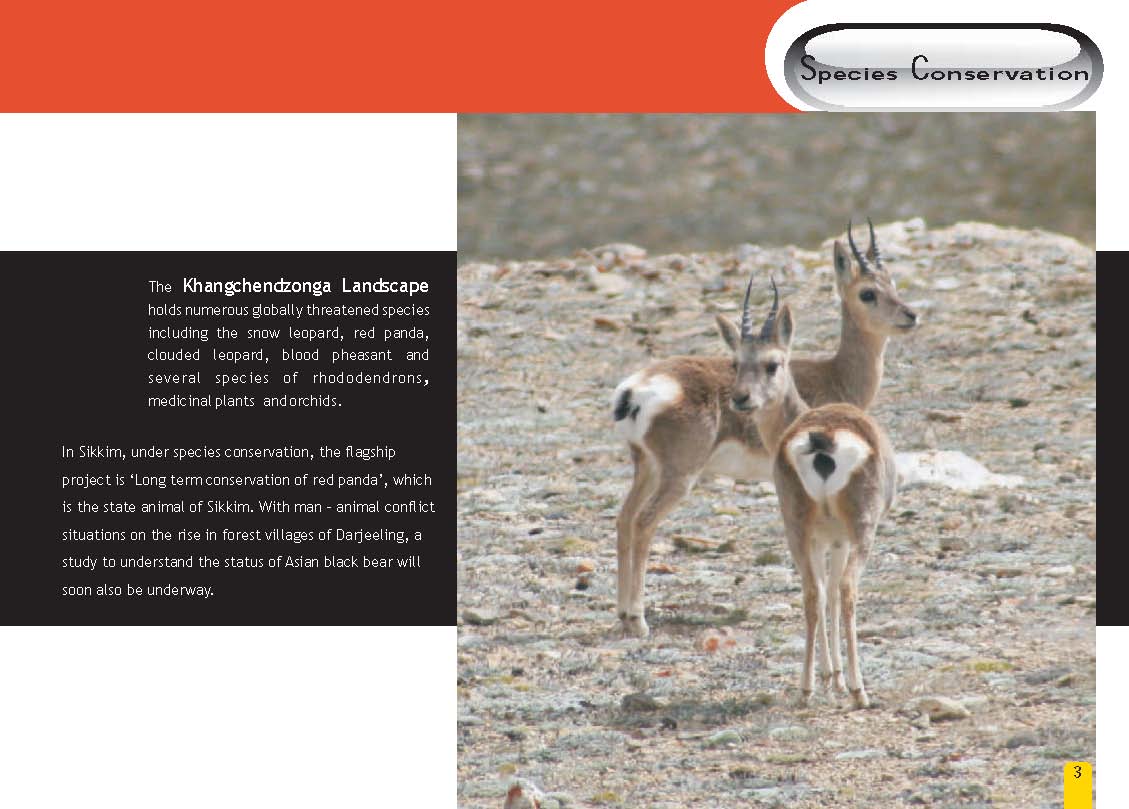

Lashar valley is a complex of alpine meadows in the North of Sikkim, with the meandering Lashar River flowing through the rugged terrain, and is an area known for its abundance of prey animals of the snow leopard like the bharal or blue sheep -Pseudois nayaur. To understand the possibilities of working for conservation of the snow leopard, the valley was surveyed intensively for signs of the snow leopard and evidences in the form of pug-marks (in different locations), and two scats were found. With this encouraging evidence from the initial survey a second survey was also undertaken which, however did not yield any more data on the animal.


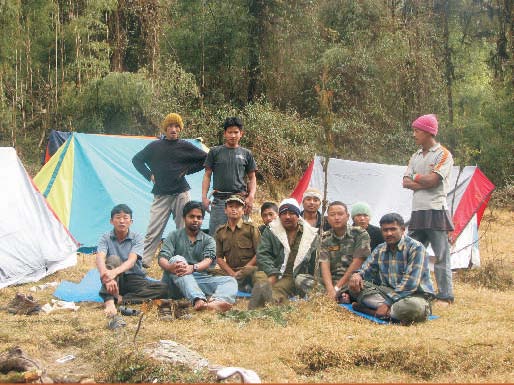
The Red Panda Project is implemented with the Forest, Environment and Wildlife Management Department, Government of Sikkim as the main partner. Joint surveys have been organised with the department to record the presence- absence status of the animal in protected areas of the state.

Building capacities of the people at field level involving both the community along with Forest Department staff has been an important component in the red panda project. Training and workshops have been organised on basic field surveys and population estimation, though much of the learning for them has come from hands - on experience
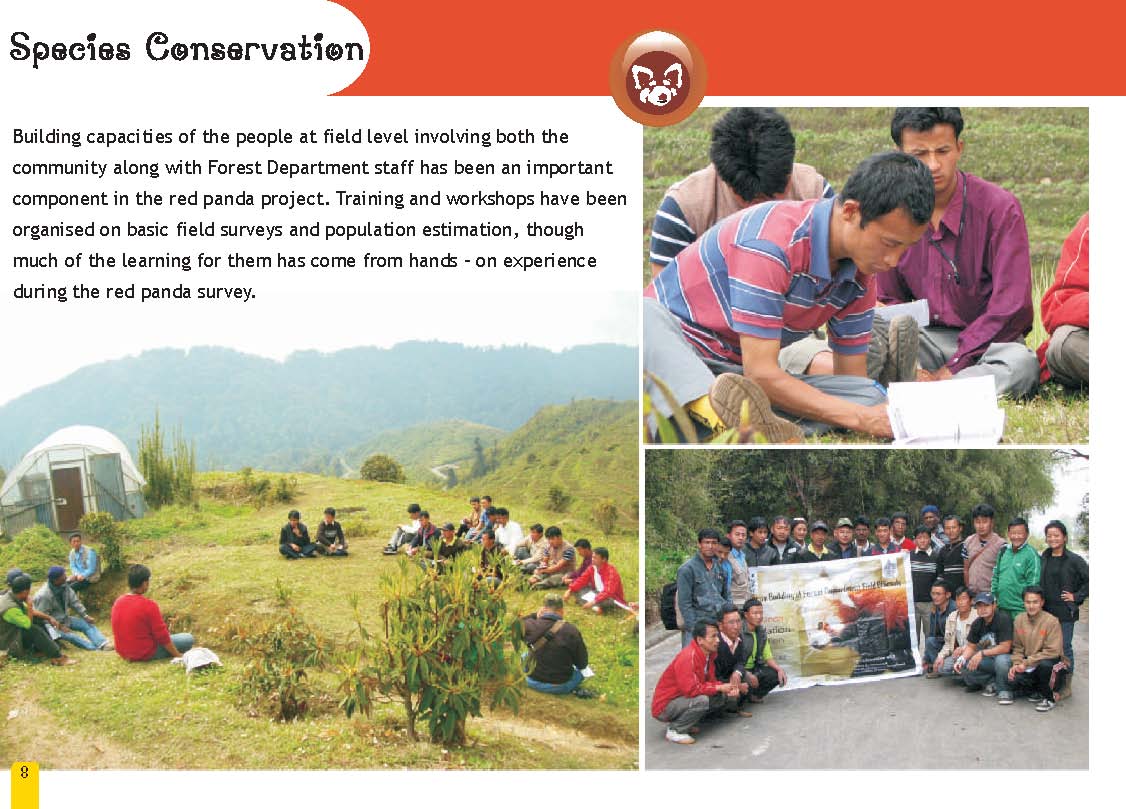
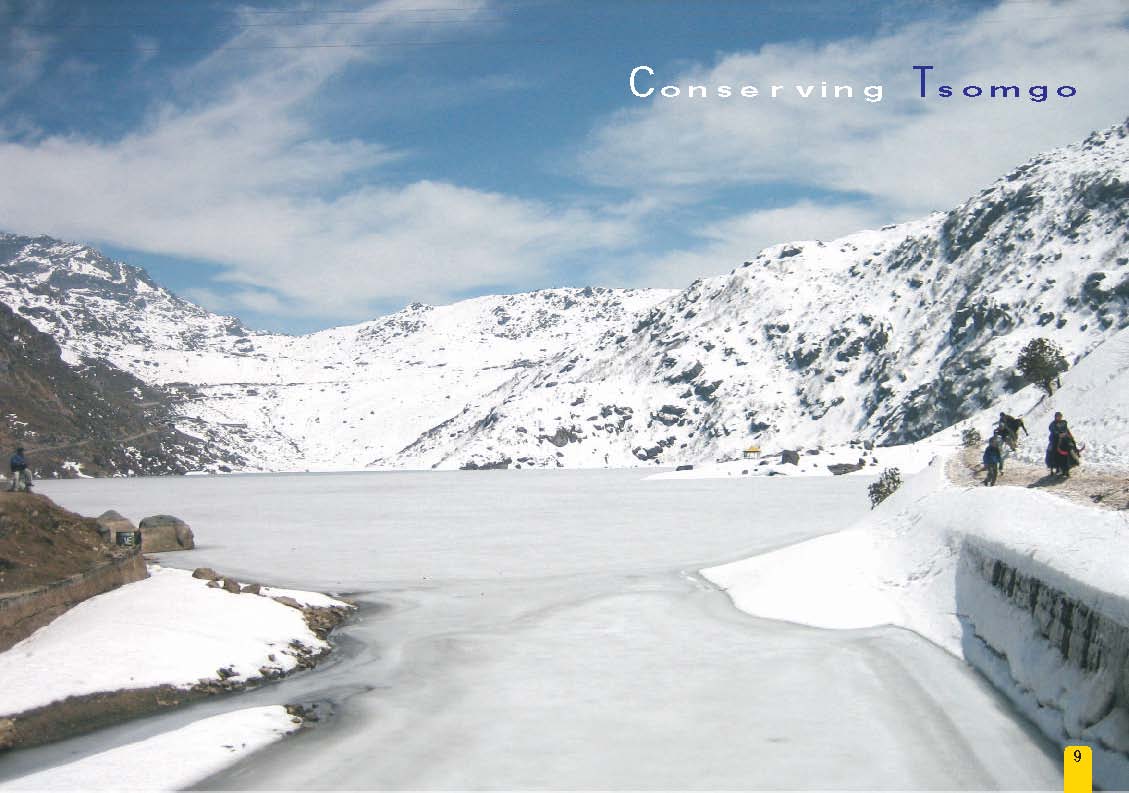
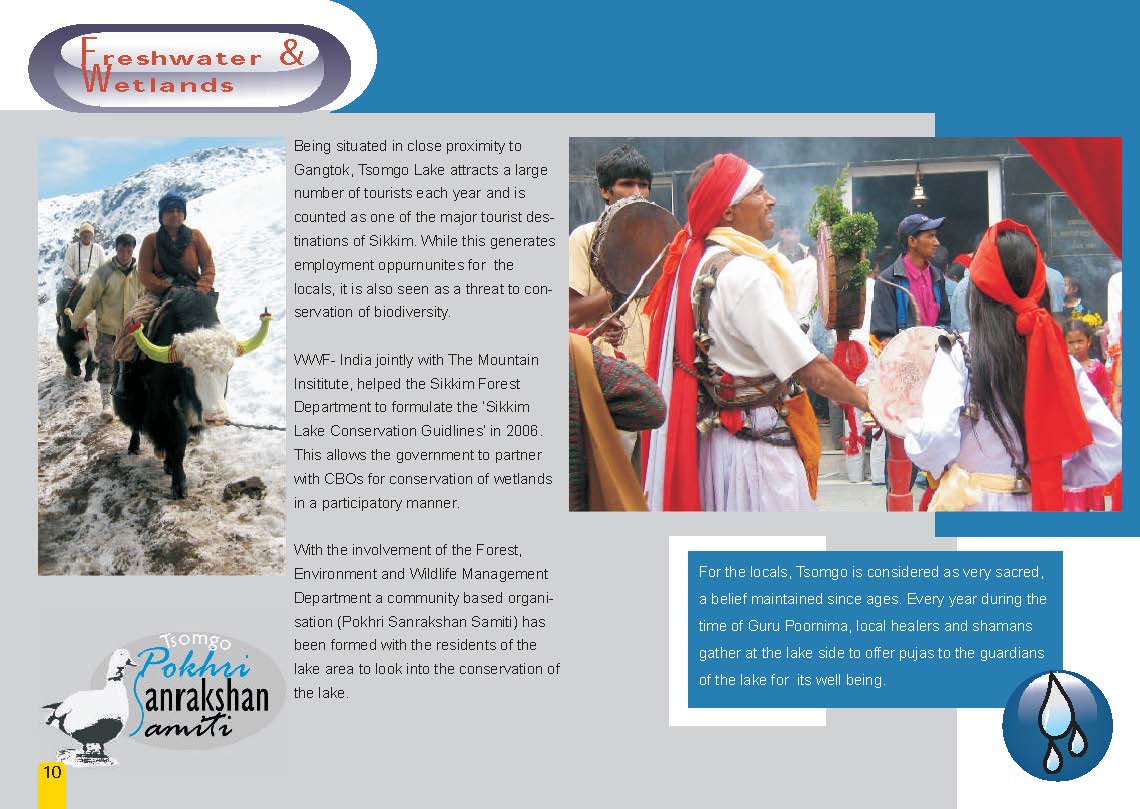
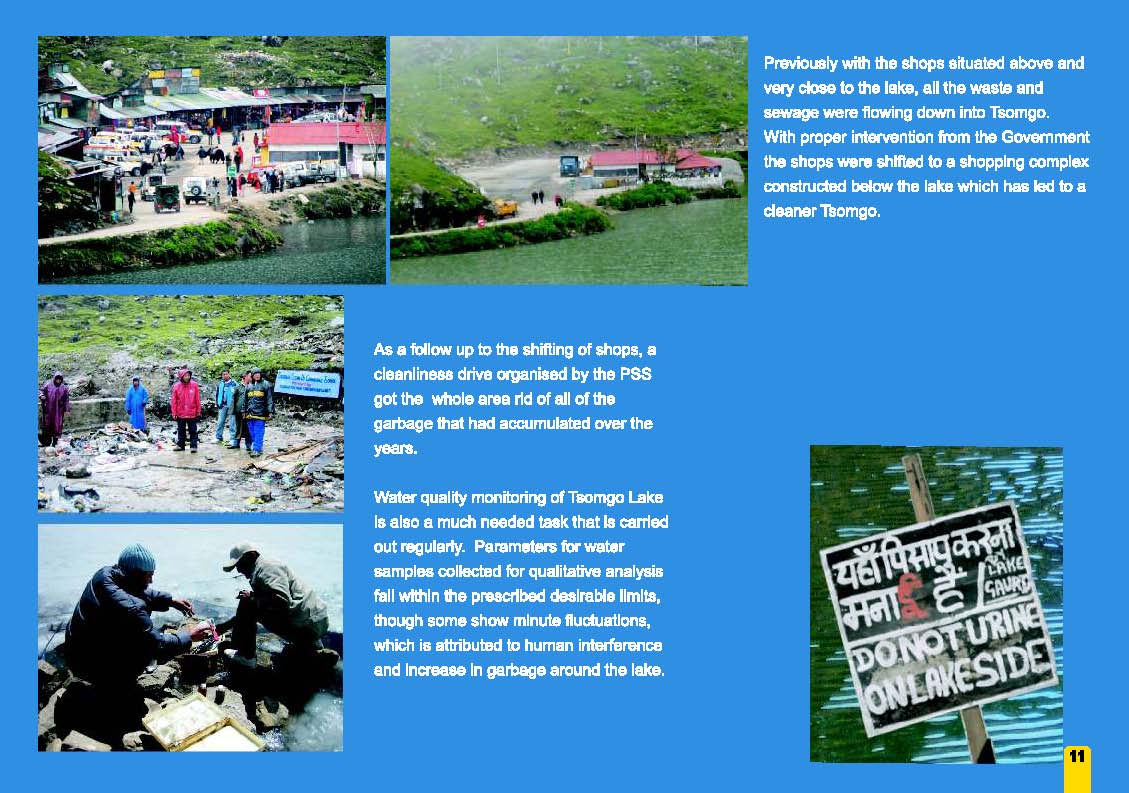
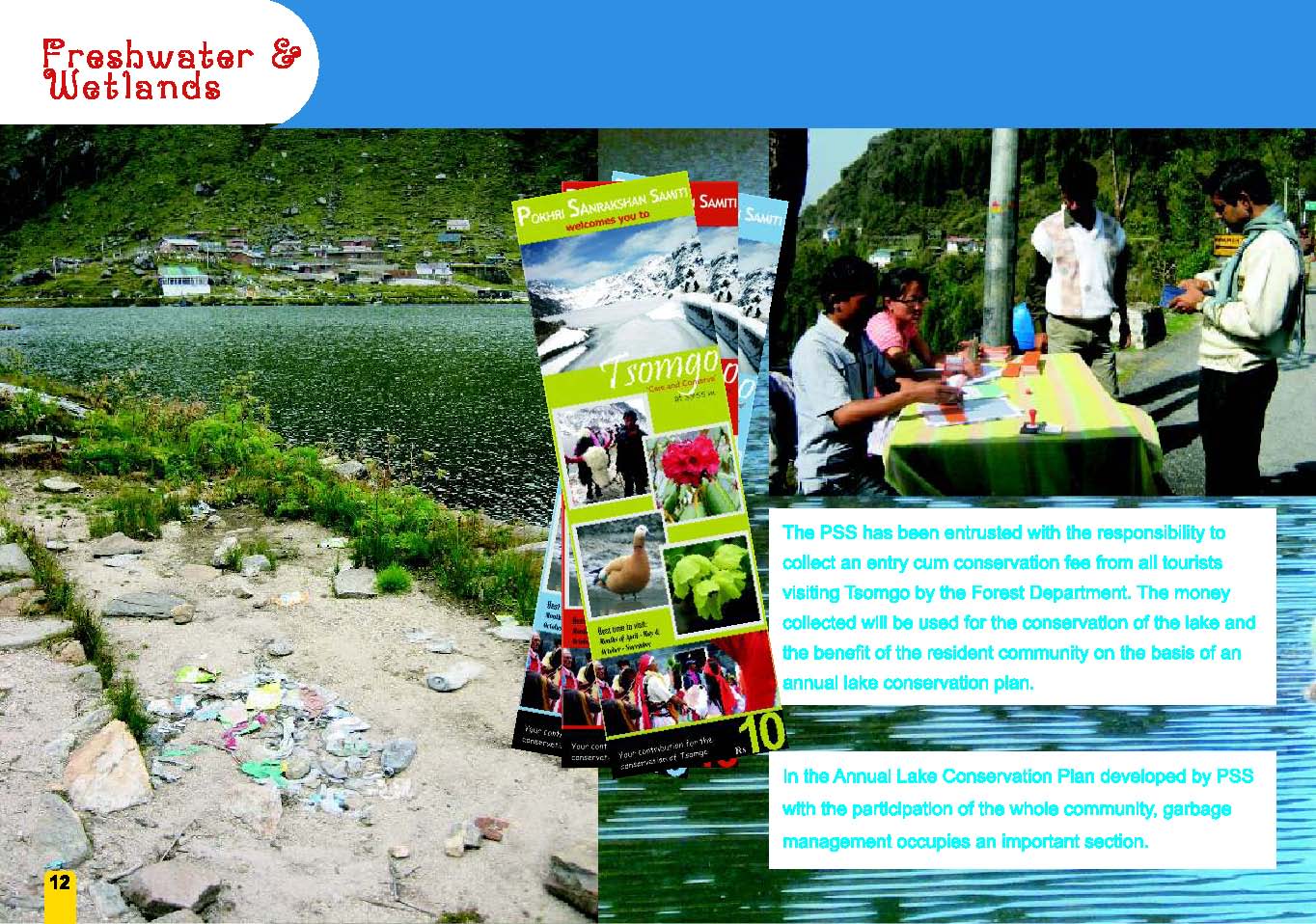
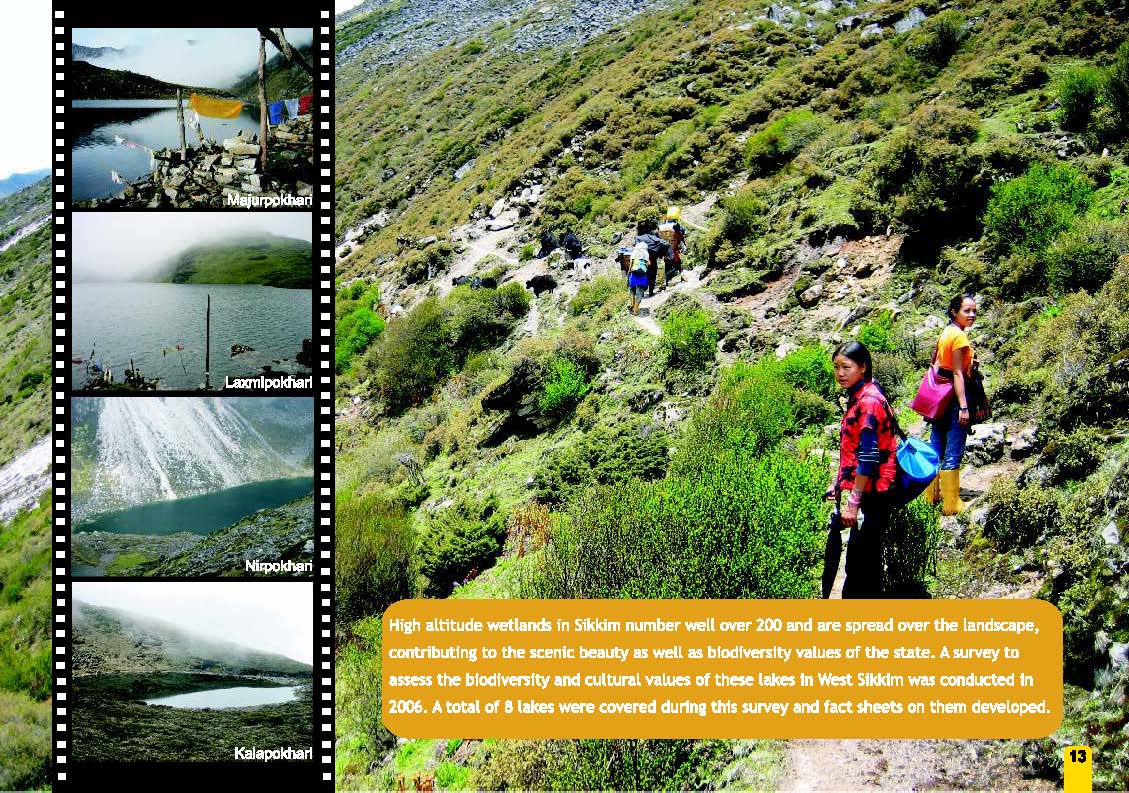
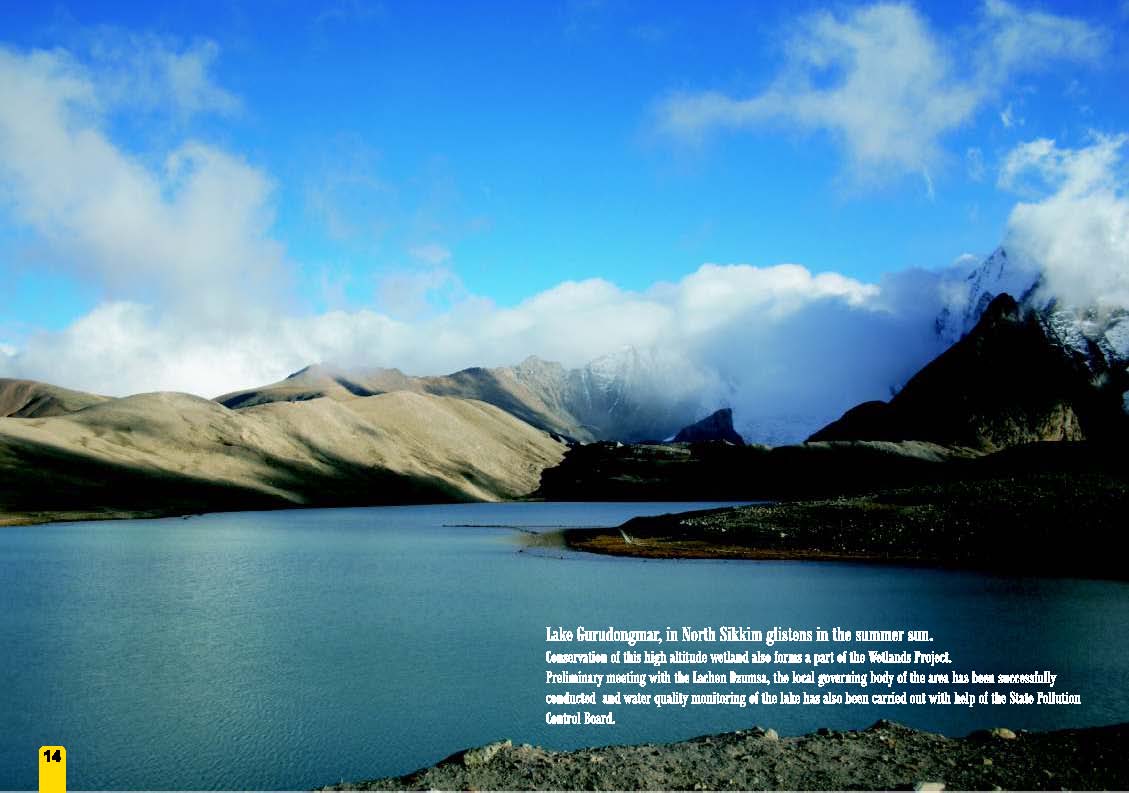
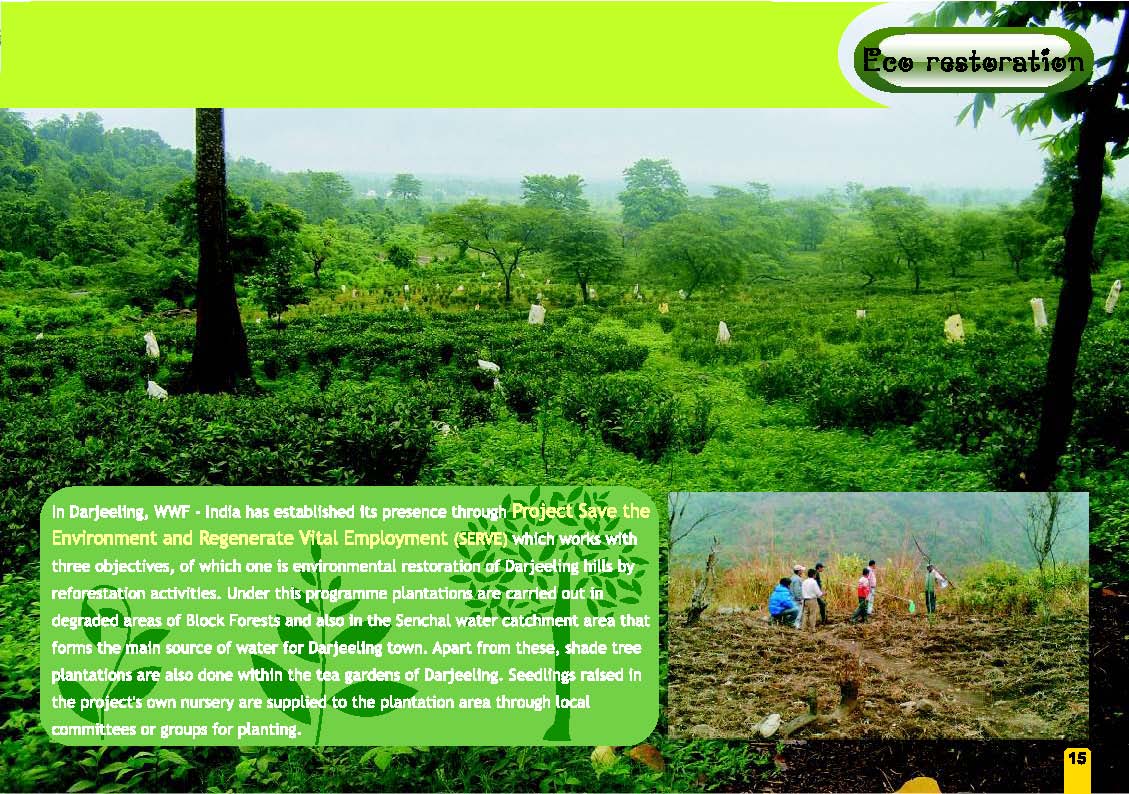
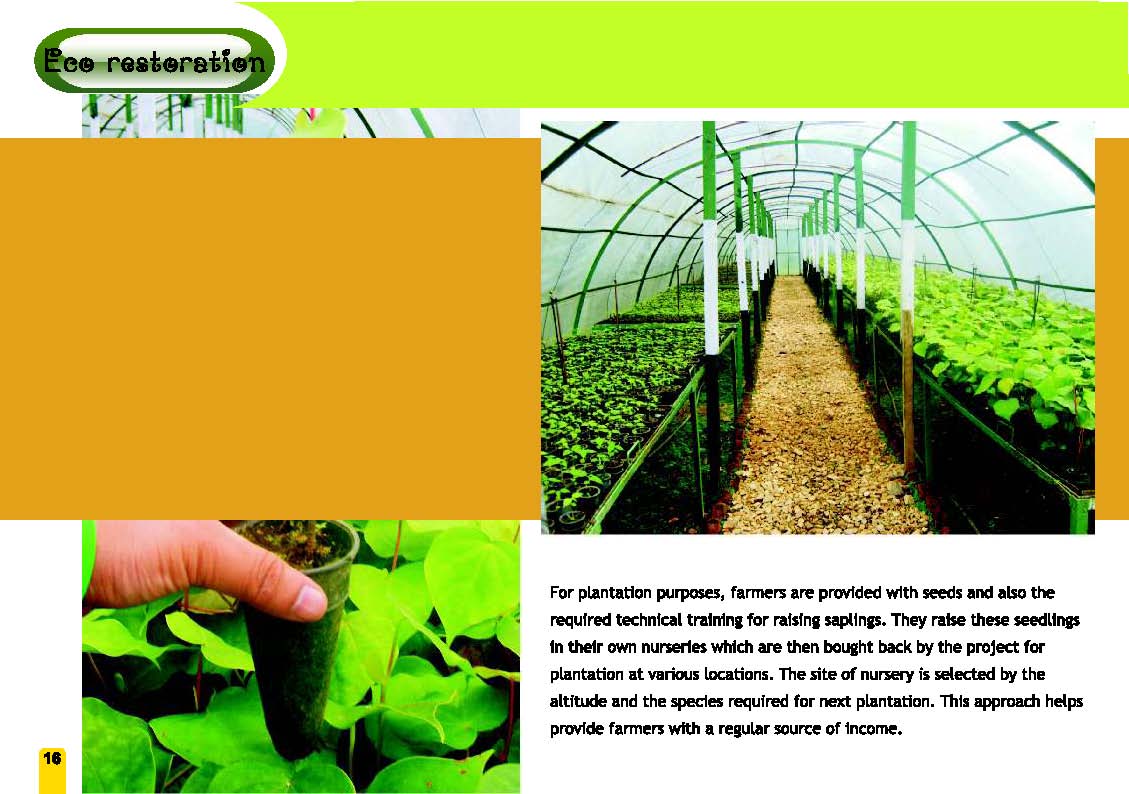
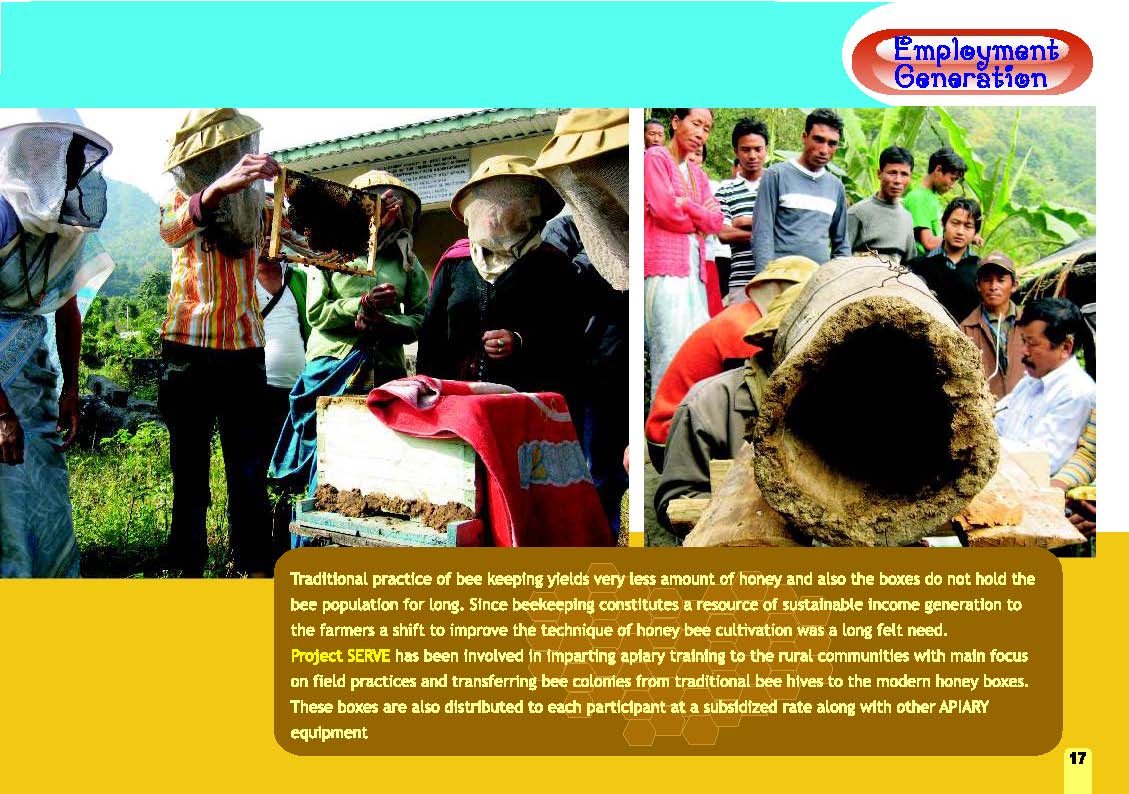
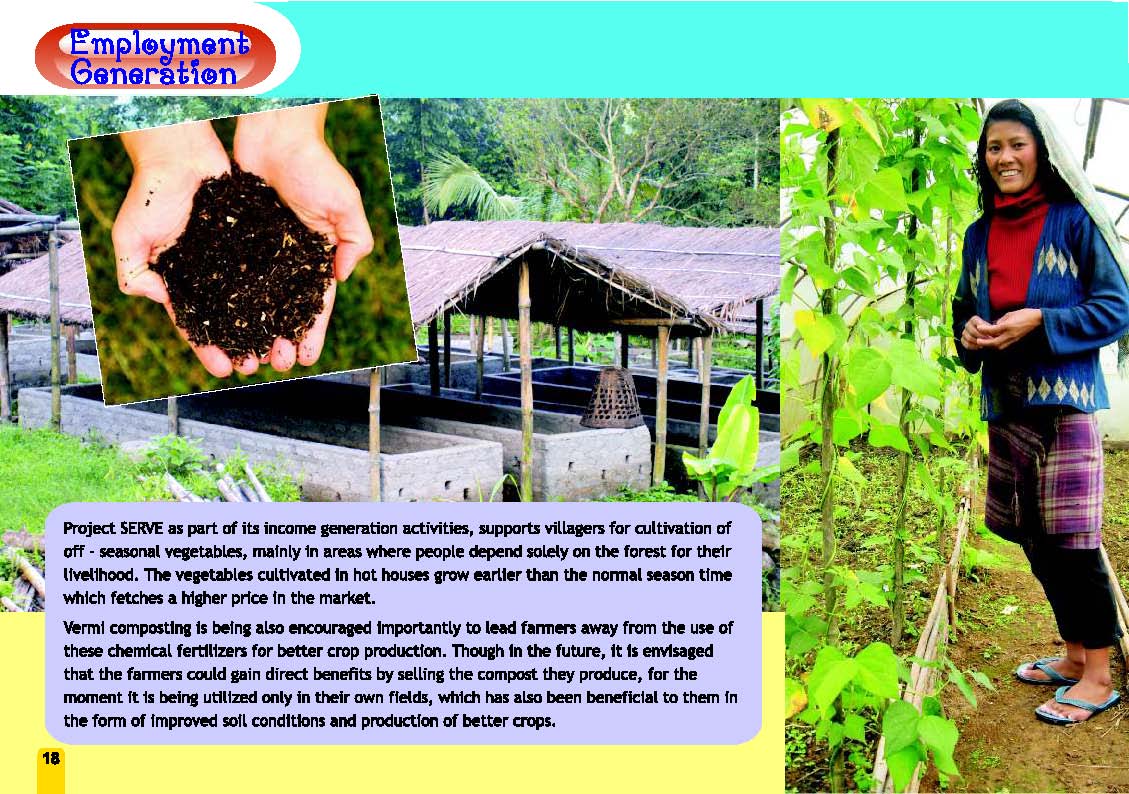
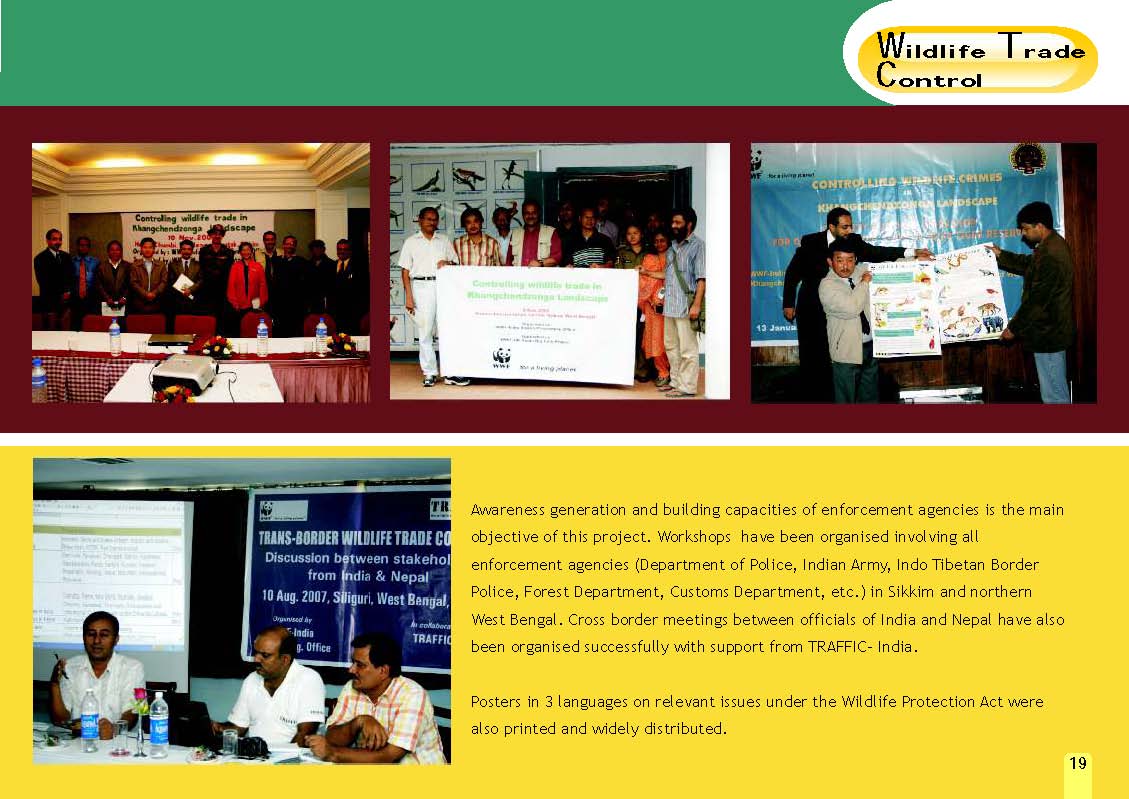

Wildlife Trade
Indian peafowl-Pavo cristatus
Shikra-Accipiter badius
The law prohibits hunting of almost all species of wild animals.

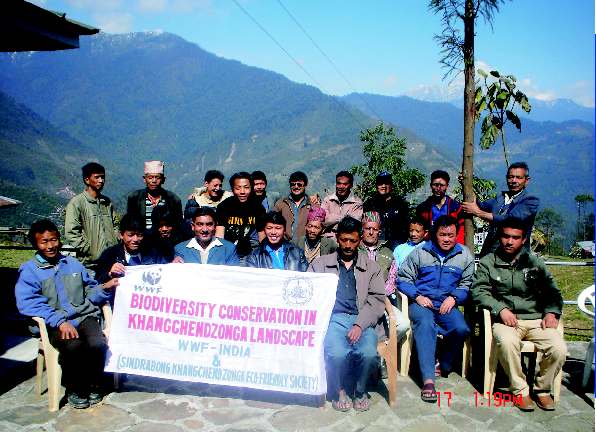
Cases of man animal conflict have been on the rise in the state of Sikkim in areas adjacent to the forests. While on one hand farmers' livelihoods are at stake on the other the conservation angle comes in to play.
A study was undertaken in South and West districts of Sikkim to understand the conflict status of these areas and to gauge the general feeling amongst locals regarding the issue, and also to recommend suitable mitigation measures.
The report of the survey will soon be published.
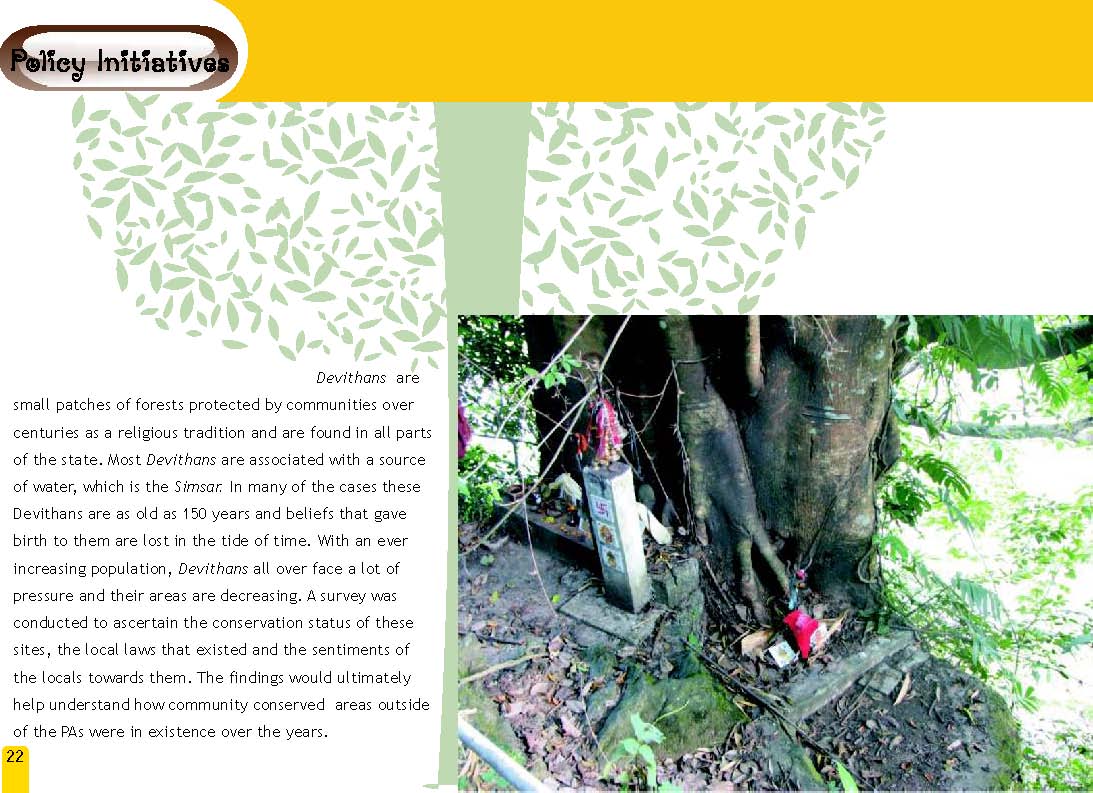
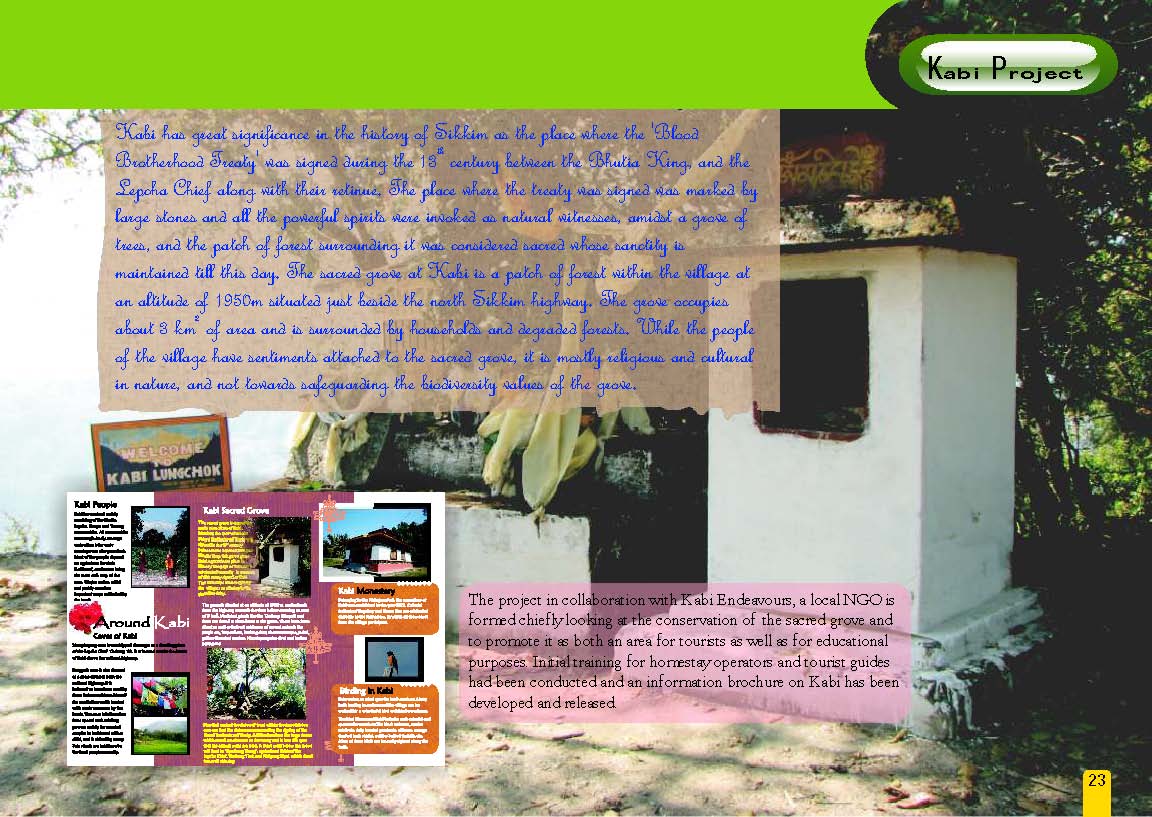
Kabi has great significance in the history of Sikkim as the place where the 'Blood
th
Brotherhood Treaty' was signed during the 13 century between the Bhutia King, and the Lepcha Chief along with their retinue. The place where the treaty was signed was marked by large stones and all the powerful spirits were invoked as natural witnesses, amidst a grove of trees, and the patch of forest surrounding it was considered sacred whose sanctity is maintained till this day. The sacred grove at Kabi is a patch of forest within the village at an altitude of 1950m situated just beside the north Sikkim highway. The grove occupies
2
about 3 km of area and is surrounded by households and degraded forests. While the people of the village have sentiments attached to the sacred grove, it is mostly religious and cultural in nature, and not towards safeguarding the biodiversity values of the grove.
The project in collaboration with Kabi Endeavours, a local NGO is formed chiefly looking at the conservation of the sacred grove and to promote it as both an area for tourists as well as for educational purposes. Initial training for homestay operators and tourist guides had been conducted and an information brochure on Kabi has been developed and released.
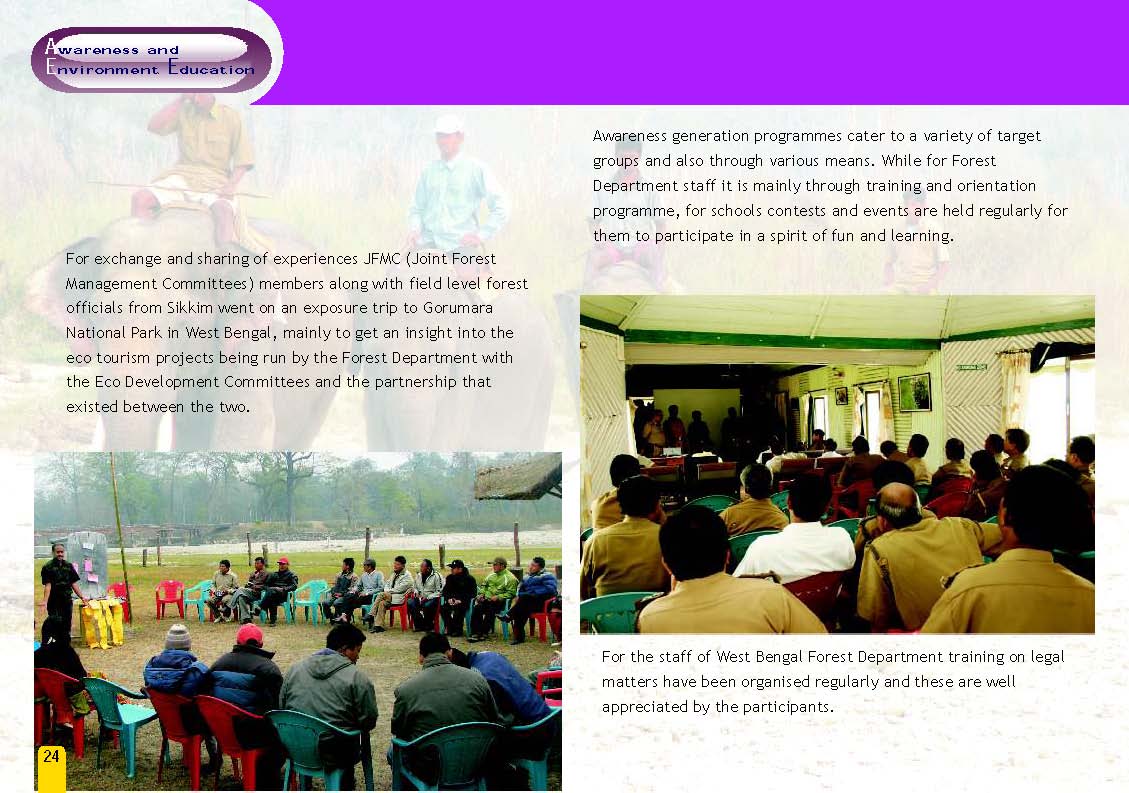
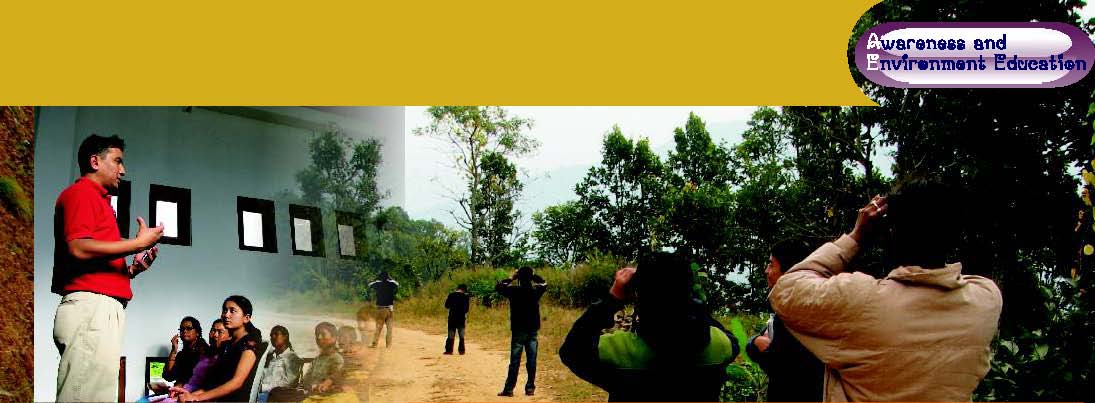
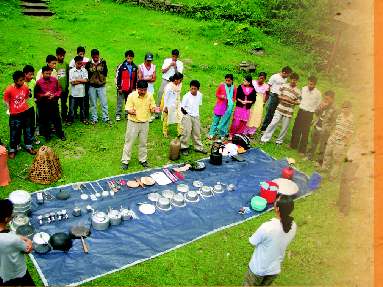
Successfully running partnerships with different NGOs at the field level form an important
requisite for better outreach to the community. Khangchendzonga Conservation Committee
(KCC) based in Yuksam, West Sikkim is an NGO working for promotion of eco tourism and
conservation in Sikkim and in collaboration with this NGO, a training for eco friendly trekking
cooks was organised. The main objective of this training was to encourage and equip the local
youth with knowledge and skills for seeking different avenues for self employment.
Greater Rangit Ecotourism Committee (GREC) is an organization formed with the partnership of Indreni Pariwar, Sumbuk and Munal Club, Kitam for the promotion of ecotourism in these villages. With Kitam Bird Sanctuary situated close to these villages there is a good possibility for village tourism to be initiated successfully in these places.
Basic training for Homestay Operators and Naturalist Guides for the youth of Sumbuk and Kitam were organised collaboratively by TMI, KCC and WWF India. As a follow up of this training a more thorough orientation for Bird Guides was also organized in Kitam Bird Sanctuary for an interested and small group of youths.
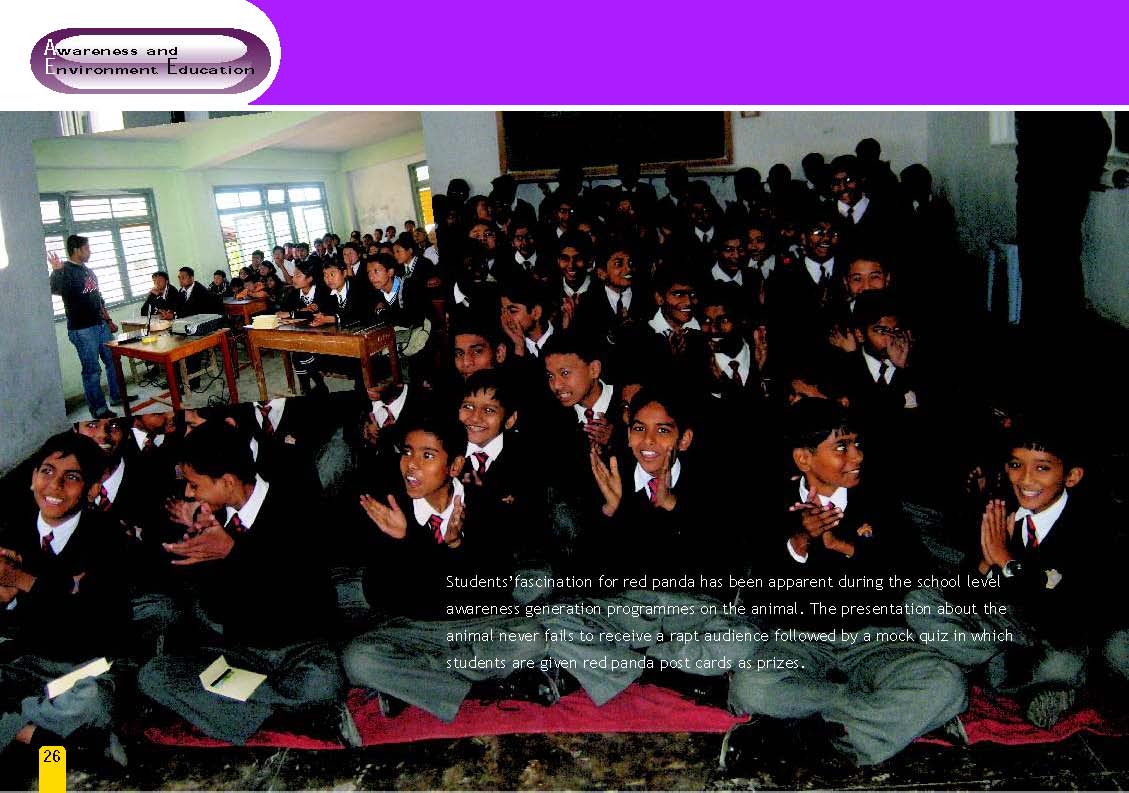

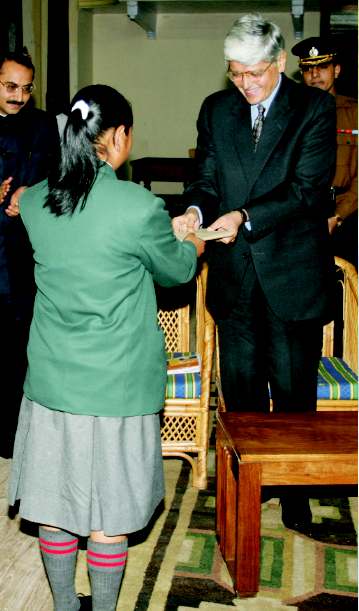
Project SERVE with a strong Environmental Education component, organises varied events throughout the year for schools to participate. Wildlife Week, Earth Day, Environment Day are important times when the schools gear up for healthy competition amongst themselves. Nature trails, quiz shows, debates, painting contests, zoo visits, town rallies are some of the programmes that are organised for the students to enjoy, share and learn.
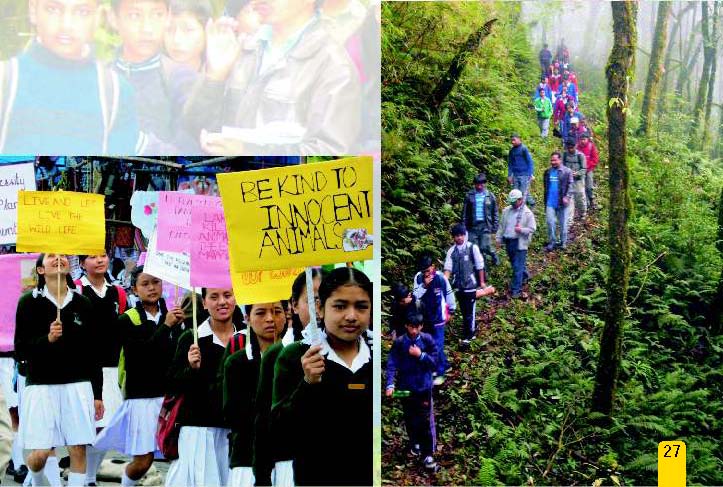
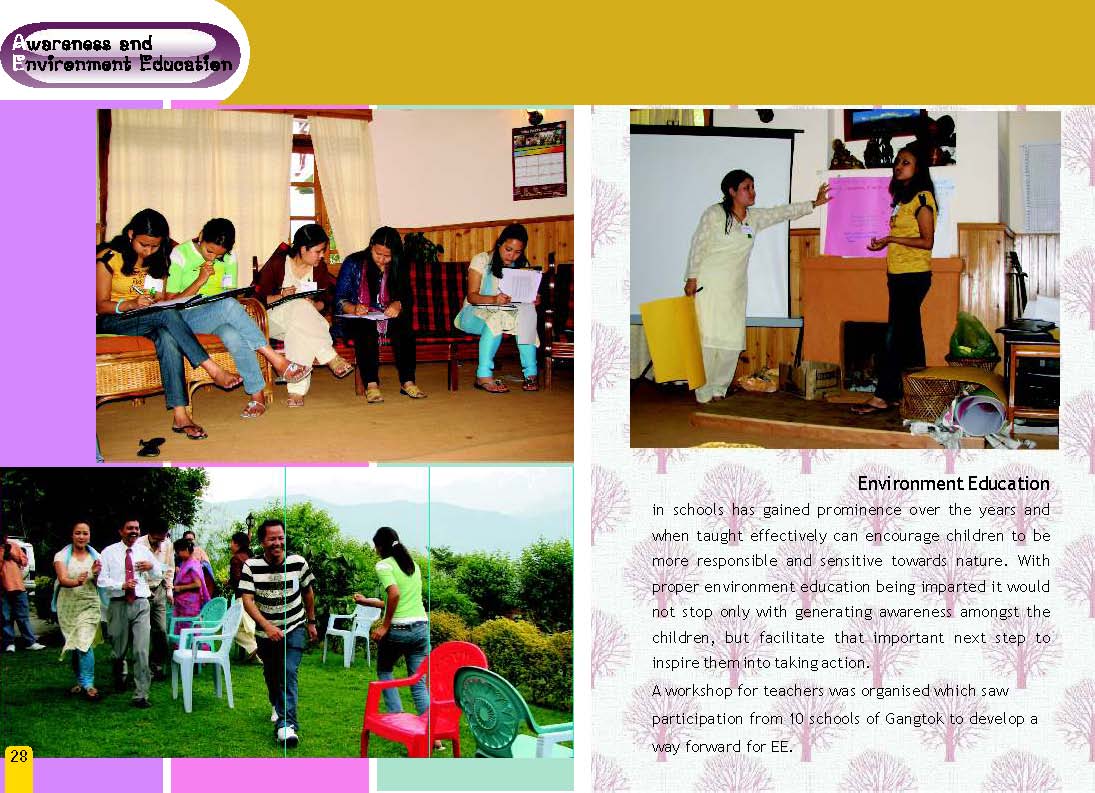
Environment Education in schools has gained prominence over the years and when taught effectively can encourage children to be more responsible and sensitive towards nature. With proper environment education being imparted it would not stop only with generating awareness amongst the children, but facilitate that important next step to inspire them into taking action. A workshop for teachers was organised which saw participation from 10 schools of Gangtok to develop a way forward for EE.
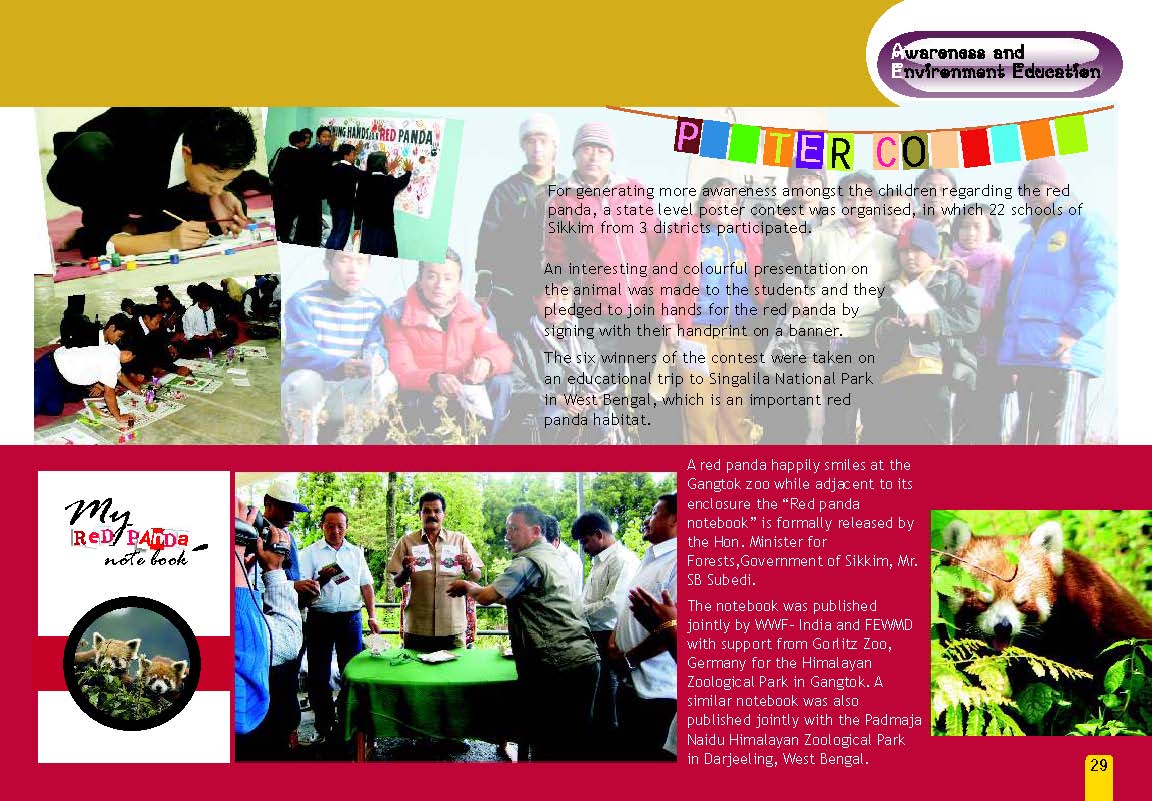
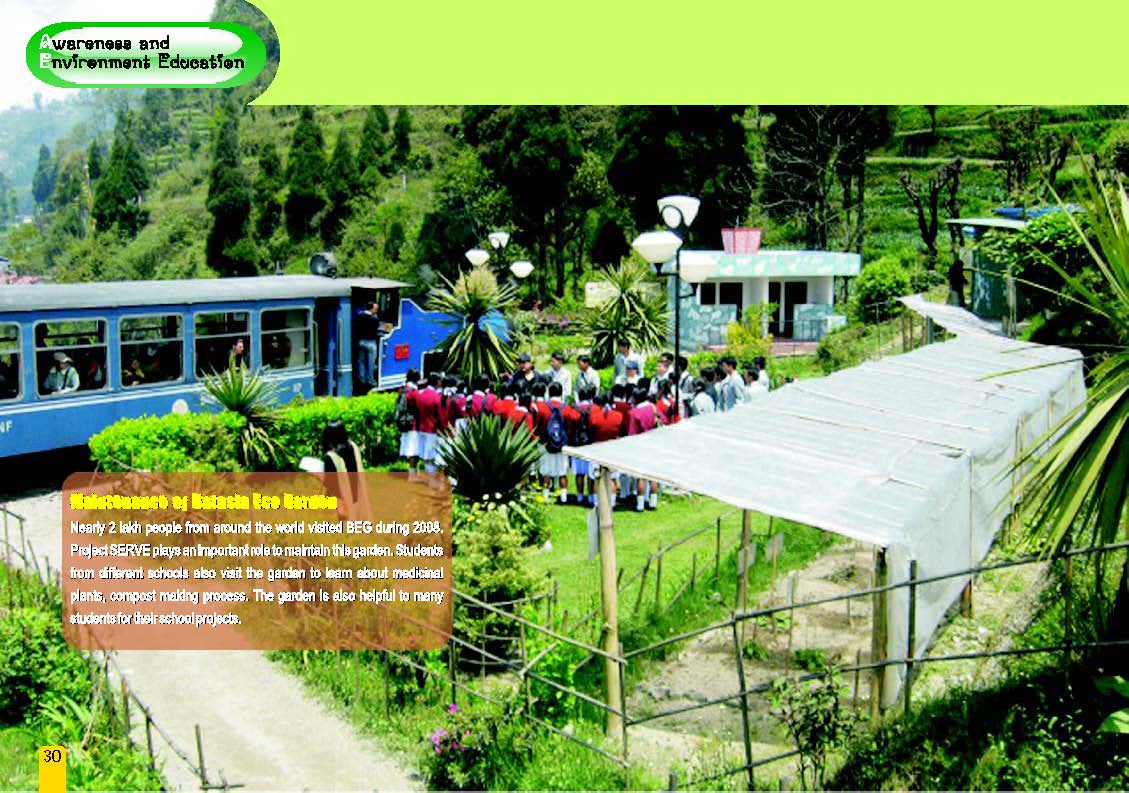
Training and Sensitisation Programmes for enforcement agencies like SSB, Army etc. also forms an important part of the Khangchendzonga Landscape Programme.









Forest, Environment and Wildlife Management Department
Department of Science and technology, Government of Sikkim
Human Resource Development Department, Government of Sikkim
Department of Home Affairs, Government of Sikkik
Rural mangement and Development Department
Police Department
17 Mountain Division along with brigades and units under this, Sikkim
Educational Institutes
Khangchendzonga Conservation Committee, Yuksam
Sindrabong Khangchendzonga Ecofriendly Society, Sindrabong
The Mountain Institute, Sikkim Unit
Kabi Endeavours
Pokhri Sanrakshan Samiti
Greater Rangit Eco-tourism Committee
TRAFFIC - India
Planters’Association
Forest Department, Government of West Bengal
Police Department
Customs and Excise Department
Department of Revenue Intelligence
WWF- US WWF- UK WWF- Germany German Zoo Directors’ Association WWF- Netherlands WWF- International Projektwerkstatt Teekampagne, Berlin, Germany TRAFFIC -International Rotterdam Zoo Gorlitz Zoo WWF -Nepal WWF- Bhutan